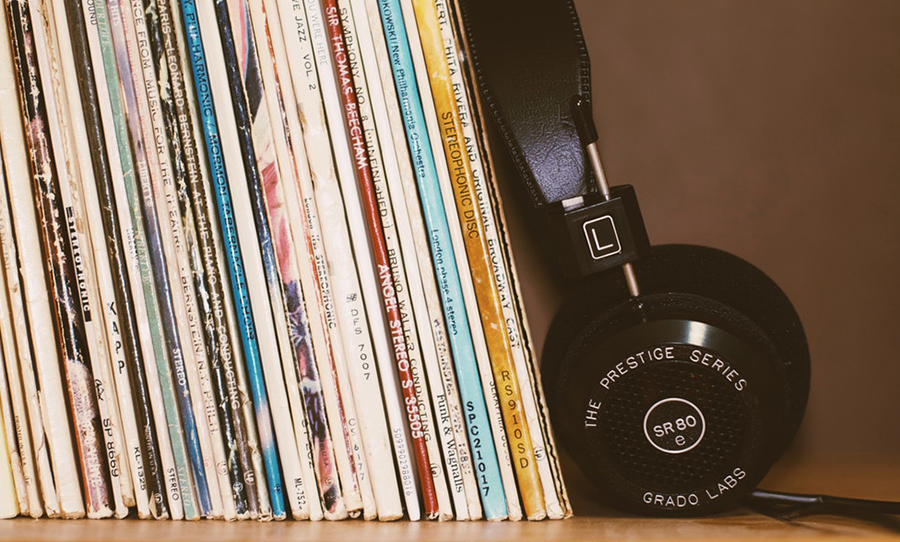When it comes to getting physical copies of your record printed, there are a few options to consider. Let’s take a look at what you need to know about getting vinyl, CDs and tapes printed.
Every musician wants to own a physical copy of their music. Whether it be a vinyl LP, a CD, or even a cassette, holding a physical copy of music in your hands is satisfying in a way unlike any other musical experience.
With vinyl booming the way it is, and tapes making a slow but steady comeback, there hasn’t been a better time to consider your options for releasing music physically in the past decade or so than now.
However, this can be a little difficult to facilitate. Manufacturing LPs, CDs and cassettes can get pricey, and unless you’re an act with a large following, it can be difficult to move stock.
Here’s everything you need to know when it comes to releasing your music on these three mediums.
CDs
Over the past couple of years, vinyl has been through a monster resurgence. And while this is encouraging for anyone wanting to release their music physically, it has also rendered the CD virtually obsolete. Nonetheless, the format remains an option for local bands to distribute their music.
Although people won’t generally order CDs off you online, if you’re playing a lot of shows, or going on tour, they are a great merch desk impulse buy (or something to give away to audiences after a show).
Compared to vinyl, CDs are relatively cheap to manufacture.
There are two methods of manufacturing CDs:
DUPLICATION: This is for low quantities, and is basically the same as burning discs from your computer.
REPLICATION: This is the high quality, professional way. 100 duplicated, fully printed CDs in standard-stock cardboard, gatefold packaging will cost you just over $400 through Implant Media.
500 replicated, fully printed CDs in standard-stock cardboard, gatefold packaging will cost you $1,045 through the same company.
Explore more options at the Implant Media website.
There are three different packaging options you’ll come across:
SLEEVES – This is pretty straightforward: a full-colour cardboard sleeve with your CD inside. They are the cheapest option and not a bad choice if you’re willing to practically give them away.
JEWEL CASE – This is the classic plastic packaging that you would know all too well. Jewel case packaging will set you back a little more than a sleeve, and prices will fluctuate depending on whether you want to include extras like a booklet.
DIGIPACK – This is the deluxe option, basically a cross between a sleeve and jewel case (multi-panel cardboard). They look the most professional, however, they are quite expensive – not the best option unless you are sure you will be able to move them.
* A note on CDs: If you’re thinking you need CDs to send to radio and press, I would reconsider. For triple j and community radio stations like RRRin Melbourne and FBi in Sydney, digital is the preferred delivery method.
“Anything digital,” says triple j’s Assistant Music Director, Gemma Pike. “Whether you’re emailing us or delivering it in person, please share your music via a third party website (Soundcloud, Bandcamp, DropBox etc), chuck it on a USB, share with us your Unearthed profile page, or a blog link if it’s been premiered online.”
Vinyl
As previously mentioned, vinyl is killing it at the moment. Sales are through the roof, and everyone wants a copy of their favourite album on wax.
So, while pressing vinyl LPs can be expensive and very time-consuming, it just might be worth it. There’s no sweeter thing in the world than having a box full of wax pizzas arrive at your doorstep. It’s spiritual.
However, getting there can be a real effort. Plus, you’ll need to be prepared to pay for mastering, lacquer-cutting, test presses, album-jacket printing and shipping, as well as the vinyl manufacturing costs.
Mastering
The first thing you’re going to need to consider is the master. Vinyl needs a completely separate master than the one you’ve used digitally or for CDs.
You can use the same mastering engineer you used previously, though you’ll just need to ask them to create secondary digital master specifically tailored to pressing vinyl.
This will typically take a little longer and there’s normally an additional cost.
Cutting Lacquers
Once you’ve had your tracks mastered, you’ll need to have a lacquer cut.
This is basically the process by which a mastering lathe cuts grooves into a lacquer, transferring the audio from your master onto a physical template.
Here’s two ways you can cut a lacquer:
• You can send it to a specialist, who’ll then send it on to your chosen manufacturing company.
• Or you can have the manufacturing company do it themselves.
Both these options will generally cost the same amount of cash.
However, the benefit of going through a specialist is that they’ll generally put a lot more effort into making your lacquer sound as close to the master as possible.
The downside? This will take a lot more time. So we’ll let you weigh up the priorities there.
Manufacturing
Manufacturers generally break their services into two separate parts: the actual manufacturing of the vinyl and the printing of the sleeve.
300 12″ vinyl LPs without a fully-printed cover will cost $2250 + GST through Zenith Records.
While 300 12″ vinyl LPs with a fully-printed cover will cost $3100 + GST.
For 7″ records, 300 copies without a printed cover will cost $1470 + GST, with printed covers costing an extra $145.
Cassettes
Cassettes have recently seen a bit of a resurgence, albeit not quite on the same scale as vinyl.
For local bands, tapes have become a common way of distributing music. Much like CDs they’re a great merch table impulse buy item, and of all these options cassettes are easily the cheapest to have duplicated.
Purchasing 100 duplicated cassettes through Cryptic Carousel will set you back a mere $250, and you can choose from a variety of colours at no extra price.
Another option is to go full DIY – like, actually do it yourself. This will mean buying blank tapes, cases, labels and j-cards (the cardboard inserts) then getting your hands on a tape duplicator (eBay would be your best bet).
Of course, this is an even cheaper option than having a professional service for you. To put things in perspective, to get 100 x 30 minute blank tapes (with cases) from Dupe Shop, it will cost you around $185 – and this is assuming you have a tape duplicator. So hey, not a whole lot cheaper, but it definitely has its perks.
* A note on mastering for tape: it is suggested that if you’re going to go down the cassette path, you get your album mastered accordingly. While files mastered for digital will work just fine, to get the best quality, you’ll want to get them mastered for cassette (if you’re also getting them mastered for vinyl, these will work for tape too). Just chat to your mastering engineer – they’ll know what to do!



